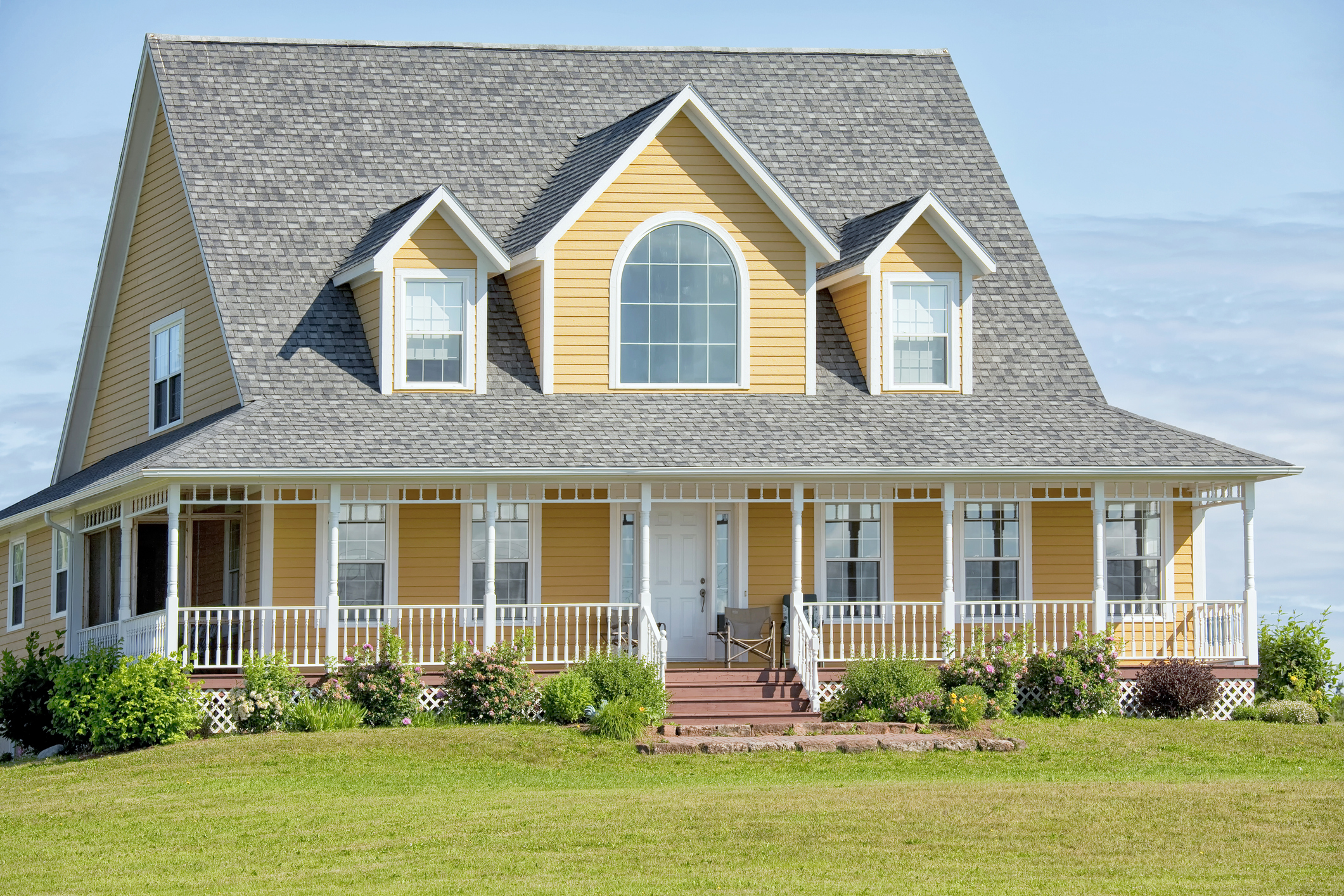How to save money at home – 20 expert ways to cut bills in 2022
These expert tips will help you cut costs on everything from food, to energy bills, to insurance and more


If you're looking for ways to save money at home this year, you're in good company. With fuel prices at an all-time high, inflation continuing to climb, and housing prices soaring for both buyers and renters, it's safe to say that almost everyone is looking for ways to scale back on monthly household bills.
This year, generic advice won't do. We've all heard the tips: swap your coffee shop latte for a drip coffee from your countertop coffee pot, track your budget, and stop ordering takeout. But this year calls for new cost-cutting ideas that will save a few hundred dollars, instead of just a few.
To source these big ideas, we turned to the experts. They offered us tips on everything from low-cost landscaping ideas, to saving on food, to decorating with a budget in mind, and reducing the amount we spend on energy with eco home improvements.
Here's their best advice.
How to save money at home in 2022
We've broken down the advice into three main categories: saving money on food, saving money on energy, and saving money around the house.
How to save money on food

1. Think beyond the grocery store
The grocery store may be the most convenient place to do your food shopping, but it's not necessarily the most cost-effective, especially in a year when grocery store food prices are expected to be at their highest since 1980, according to the USDA.
This year, consider ordering groceries through companies like Misfits Market or Imperfect Foods. Both source surplus food and 'ugly' produce -- items that are too big, too small, or simply strange looking, but still perfectly fine to eat -- and sell them at a lower cost.
Misfits Market sells everything from organic produce and high-quality meats to pantry staples and wine. It's available in the lower 48 states, and prices are up to 40 percent off traditional grocery store prices.
2. Go straight to the farm
'There are always great deals at the farmers market if you get are flexible and creative,' says Rachael Mckennon of Milk Glass Home, a website dedicated to cost-efficient and sustainable living. 'Think in terms of categories instead of shopping for specifics. For example, look for any greens instead of requiring a specific type of kale. Stock up on cheaper bulk foods like potatoes, carrots, and onions and supplement those with more expensive crops.'
If you're lucky enough to live in an area with local farms nearby, check if you're able to participate in a CSA, or community-supported agriculture, which is almost like a farm subscription box.
'You’ll save even more if you pay for a CSA at your local farm,' says McKennon. 'Check localharvest.org to find a CSA farm near you. Although CSAs require up front payment, you’ll love getting boxes of the freshest produce each week.'
3. Store your produce properly
We're all guilty of forgetting about a cucumber at the bottom of the crisper drawer, or buying too many blueberries. But with food costs expected to increase between 6.5-7.5 percent this year , wasting or forgetting about produce is becoming a pricey oversight.
You can get more life out of your produce by storing it correctly.
'Keep ethylene-producing foods away from ethylene-sensitive produce,' says Holly Eagleson, VP of Marketing at Misfits Market.
Ethylene is a gas that's naturally produced by certain fruits and vegetables as they ripen. For produce that's ethylene sensitive, any exposure to excess ethylene gas will
speed up the ripening process, causing it to spoil faster.
'A few bad combos include [storing] apples with avocados, bananas with mangoes, tomatoes with cucumbers, potatoes with onions, and broccoli with peppers,' says Eagleson.
4. Give fruits and veggies a second chance
If you do find yourself with more produce than you can eat, don't toss it.
'Make freshly-chopped herbs last longer by freezing them in an ice cube tray full of olive oil,' suggests Eagleson. 'Or, freeze near-expiration stocks or sauces in ice cube trays and defrost the perfect amount of broth you need for up to a year.'
Produce looking a little past its prime? Water could be all it takes to revive it. A few of Eagleson's tips:
- Soak root vegetables in water overnight to firm them up.
- Revive wilted lettuce by giving it an ice bath for at least an hour.
- Give limp celery and asparagus crisp again by placing them in a glass of water for at least 30 minutes. The water will rehydrate them.
- Soak too-soft berries in sugar water. After a few hours, they’ll be syrupy and thick and perfect for topping off cakes or ice cream.
5. Start a garden
Finally, consider growing your own fruits and vegetables, starting with the easiest vegetables to grow if you're a beginner.
'With minimal spend and effort you can cultivate and harvest your own vegetables,' says Andrew Porwol, owner of Garden Centre Shopping. 'I always recommend to start off with easy growing herbs and vegetables that come with a high price tag when bought in stores. Veggies like swiss chard, green beans, and eggplants can cut down your food bill as well as strawberries, blue berries and other fruits.'
How to save money on energy

6. Check your insulation
With fuel prices soaring this year, now is the time to check your home's insulation.
'Ultimately, any heating system is going to either underperform or cost you more money due to a longer running time if your home isn’t properly insulated,' says James Lloyd, design and specification consultant at Wunda Group, a heating company. 'We can lose up to 25 percent of heat through the roof of an uninsulated home, so this is a great place to start to help save on costly bills.'
If your home has an attic, the simplest way to add insulation to your home is to lay batts of fiberglass insulation between the joists on the floor. If your attic has a finished floor, you may need to rip it up and install the insulation below it.
It's not just the roof and walls that let the heat out though. It pays to audit all of your home's major systems for their
'Ensure your home is properly equipped to retain the heat you’re using, including investing in triple or double glazing and eliminating any drafts,' says Lloyd. 'Consider fitting your hot water cylinder with an insulating jacket – it could reduce your heating costs as well as lower carbon emissions.'
7. Use appliances efficiently
Conserving energy at home goes beyond shutting off the lights when you leave a room. Being more considerate about which appliances you choose and how you use them can help cut back energy costs.
'Countertop appliances use less energy than major appliances, so instead of baking a batch of cookies in the oven, heat up a countertop toaster oven,' says Milk Glass Home's McKennon. 'You’ll use less energy and because they’re so small, they heat up even faster.'
When you do need to turn on the oven, try to batch your cooking to make the most out of the energy it takes to preheat it. 'If you do turn on your oven, make the most of it by baking as much as you can. Bake some oatmeal for breakfast, bread for lunches, and toast some nuts from snacks.' McKennon says.
8. Consider solar power
According to the International Energy Agency, solar is the cheapest form of energy in history.
What deters many homeowners from switching to solar power is the upfront costs to have it installed. The good news is that, not only are solar panels becoming more affordable, but there are plenty of financing options available to help make the upfront cost less imposing, including leading panels, and loan options.
If installing solar panels is still off the table, incorporate solar energy into your home in other way. Solar-powered landscape lighting, like spotlights and path lights, is now widely available through mass home improvement stores, for example. The units are entirely solar powered, and cost just a few dollars each.
9. Update your heating
If your home is still heated with natural gas or oil, this year might be the time to consider updating it or switching to an eco heating system. Radiant floor heating, geothermal heating, and electric heat systems can all be far more cost efficient than burning fuel.
'Underfloor heating (UFH) can be an incredibly efficient and cost-effective system for the home, with minimal installation requirements and very little maintenance overall,' says Llyod. 'There are different types of UFH available; electric systems are really only advisable in small spaces such as a bathroom due to increased running costs, however a water-based system costs less to run and is much more environmentally-friendly thanks to lower energy consumption.'
10. Layer your energy-saving strategies
Energy saving strategies work best when combined. The benefits of adding insulation are boosted by sealing cracks around the windows, which also makes heating your home more efficient.
'Each change will contribute to improving comfort while also lower costs,' says Ian Charters, owner of home repair company Handyman Connection of Grapevine . 'For instance, closing gaps around your doors and windows can save as much as 10 percent. Setting your thermostat to 78F in the summer and 68F in the winter will help as every degree of extra cooling or heating will increase energy usage 6 percent to 8 percent.'
Other upgrades Charters suggests include using ceiling fans, and installing a smart thermostat. 'Even adding a shade structure around your AC unit will help keep direct sunlight off and allow it to work more efficiently,' he says.
11. Comparison shop
Depending on where you live, you may or may not have more than one energy supplier in your area. But if you do, it's a good idea to comparison shop to ensure you're getting the best price.
'In terms of saving on energy costs, try a website like Power to Choose, that will compare plans in your local area and show you the cheapest costs per provider. You do need to keep special terms and cancellation fees in mind however energy costs are rising and even a modest saving per kilowatt hour can really put your financial goals ahead,' says Shawn Plummer, CEO of The Annuity Expert.
12. Install a smart thermostat
A smart thermostat may come with an upfront cost, but it's quickly offset by monthly energy savings.
'With regard to improving energy efficiency at home, smart thermostats are still highly recommended,' says Plummer. 'You can expect to save at least 7 percent on your heating and cooling bills with a smart thermostat, all the way up to 15 percent depending on your costs and usage. Look for rebate programs on smart thermostats in your area. These can lower the upfront cost for faster savings.'
How to save money around the house

13. Reconsider your landscaping
Plants, grass and other vegetation are often the default backyard landscaping ideas, but they're also expensive to maintain, not to mention a drain on environmental resources.
For one, grass and plantings require regular watering. Then, there's the cost of running and maintaining your lawn mower, or hiring a landscaping service.
'It's becoming more popular to forego traditional grass areas for something more wild looking and thoughtful in terms of water use' says California-based landscape designer Sarita Jaccard. 'You can still create a lush feeling garden without grass and tons of tropical water sucking plants. Kids can still fully enjoy and play between plants, decomposed granite, or gravel.'
14. Keep up with repairs
It can be easy to adopt a 'kick the can down the road' mentality when it comes to small-but-pesky home repairs, opting to bide time until the job can't be ignored instead of spending time and money to make a small fix. But this type of thinking can lead to much larger repair bills in the future.
'As a landlord, I have a unique perspective because I want to avoid costly future repairs and the best way to do that is preventative maintenance,' says Ed Brancheau, owner of SunnyNest Homes. 'I know it sounds a little crazy but, at $10-12 per tube, caulk is the biggest money saver.'
Brancheau says it's one of the key tools he uses to stop small problems form turning into big ones.
'Every house I've bought has had mold in the bathroom above the shower because the caulking was old,' he says. 'If the owner had simply removed the old caulking and the small piece of moldy drywall, and then re-caulked, the entire panel of drywall wouldn't have had to be replaced.'
Brancheau also uses it around windows to prevent water from getting into the walls, and to help stop drafts, as well as around sinks to make sure that water doesn't get into cabinets.
'Honest to God, there are hundreds of useful uses for caulk,' he says.
Besides caulk, certain home maintenance tasks can save you money almost immediately.
Changing air conditioner and furnace filters, and swapping burned-out lightbulbs to LED versions can cut costs right away.
15. Lower your homeowner's insurance premiums
Homeowners insurance is a necessary expense if you own your home, but there are a number of ways you can spend less on your policy each month.
'You can lower your homeowners insurance costs by increasing your deductible, installing home security devices like fire and burglar alarms, and reinforcing your home with things like storm shutters and laminated glass windows to make it more weather-proof,' say experts at Lemonade insurance.
16. Go timeless, not trendy
When it comes to decorating your home, interior design trends can be an enticing proposition. They're fresh, new, and they look great on Instagram. But, if you want to decorate in a way that saves money in the long run, timeless, quality pieces are your best bet.
'Decorating with longevity in mind means seeking both trend proof design and quality craftmanship that is designed to last,' says Emily McGarvey, director of sustainability for Room & Board. 'Room & Board balances modern lines with timeless details so our customers love them far beyond this year’s trend.'
Another vote for timeless decor? It's also easier to find it secondhand. Thrift stores and antiques shops are full of high-quality traditional furniture, art, and decor, which gives you a low-cost source for decorating and updating your home.
17. Find your local salvage shop or returns retailer
Salvage shops are becoming more and more popular around the U.S. and can be an excellent way to find brand new of gently used furniture, small appliances, decor, and even linens at a fraction of the price at which you'd find them in retail stores.
There are a few types of salvage shops (also called salvage yards or salvage warehouses) out there.
The first is architectural salvage. These retailers generally sell fixtures, doors, lighting, tile and more from historic homes, old factories and warehouses, or homes that are being renovated.
You'll also find furniture salvage stores, also called returns retailers, like Dirt Cheap and Bargain Hunters, which sell brand new furniture (often returned or open-box items) from mass-market retailers like Target, Home Depot, or Overstock. These retailers often bid on pallets or truckloads of salvaged items, and then sell them at a deep discount.
Finally, retailers like Habitat ReStore, operated by Habitat for Humanity, also sell new, salvaged, and gently used appliances, building materials, flooring, home goods, furniture, and more.
18. Cancel unused subscriptions
'One of the best ways to save money is to get rid of subscriptions you don’t use frequently enough. If you subscribe to a variety of streaming platforms, for example, figure out which ones you use the most and unsubscribe from the others,' says Carter Seuthe, CEO, Credit Summit. 'If you have a gym membership but rarely go, switch to a cheaper plan or cancel it altogether. You should aim to only pay for services that you actually use.'
While you'll find apps that are designed to help you identify and cancel unused subscriptions, you can also find the information yourself in a matter of minutes.
'Comb through your bank and credit card statements to find any hidden/unused subscriptions to get rid of,' Seuthe says.
19. Shop secondhand
There's a lot of upside to decorating with secondhand finds, including a chance to shop sustainability, and the ability to skirt the global supply chain issues that are impacting furniture lead times. Of course, it's also far more cost effective to shop secondhand.
'To decorate your home for less, hit the thrift store' suggest McKennon. 'Secondhand furnishings are more sustainable for the planet and your wallet. My favorite place to find appliances, furniture, and home decor is Facebook Marketplace. You’ll be surprised at how many people pass on great stuff for less because it’s a little dirty or faded. With a little elbow grease, you can decorate your dream home for way less.'
20. Adopt the 30 day rule
The 30 day rule is the impulse buyer's equivalent of counting to 10 in your head to stop you losing your temper. Essentially, you give yourself 30 days before you buy anything non-essential (on impulse or not). After the 30 days are up, you should have good perspective about whether you really need or still want what you were going to buy, assuming you remember you ever wanted it in the first place...
What is the 50 30 20 budget rule?
The 50 30 20 budget rule defines a wise approach to home budget, popularized by Senator Elizabeth Warren in her book: All Your Worth: The Ultimate Lifetime Money Plan. Put simply, it is about dividing up your income, after tax so that 50% is spent on what you need, 30% on what you want and 20% is put into a savings account or paying off debts.
Sign up to the Homes & Gardens newsletter
Design expertise in your inbox – from inspiring decorating ideas and beautiful celebrity homes to practical gardening advice and shopping round-ups.

Kaitlin Madden Armon is a writer and editor covering all things home. Her work has appeared in Real Homes, Architectural Digest, Martha Stewart Living, Refinery29, Modern Luxury Interiors, Wayfair, The Design Network, and lots more. She graduated from Northeastern University with a degree in journalism and currently lives in Connecticut with her husband, three kids, and black lab.
-
 Designers say these are the 10 kitchen cabinet details to know about if you want to elevate your space
Designers say these are the 10 kitchen cabinet details to know about if you want to elevate your spaceIt's all in the details – the designer touches that make all the difference to your kitchen cabinets
By Karen Darlow Published
-
 Garden experts warn against overcrowding flower beds – why this on-trend look is the worst thing you can do
Garden experts warn against overcrowding flower beds – why this on-trend look is the worst thing you can doIt's tempting to create an abundant, overflowing garden bed, but it can limit your plants in more ways than one
By Tenielle Jordison Published